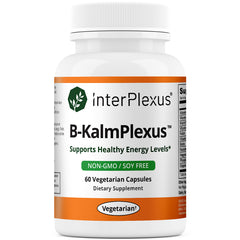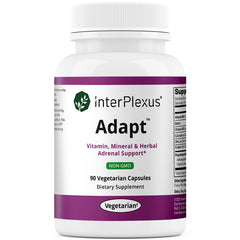
Why do doctors quickly prescribe medication for high blood pressure (hypertension) instead of trying to determine and then treat the underlying cause? There are many potential underlying causes of hypertension, including exposure to toxic heavy metals.
While most realize they’re exposed to toxic heavy metals at times due to modern life, you might not know you could be exposed every time you eat or even drink water! Yes, unknown levels of toxic metals might be lurking in your breakfast, lunch, and dinner!
This blog post will discuss the specific toxic metals that are associated with hypertension, testing for exposure to toxic metals, and sources of toxic metals. Once you know which toxic metals you’re exposed to via laboratory testing, you can begin to avoid the sources of the toxic metals to boost your health while also gently supporting the detoxification of the toxic metals.

What is High Blood Pressure (Hypertension)?
A blood pressure measurement is the pressure at which your blood pushes against your blood vessel walls as it flows from your heart through your arteries. Arteries are the blood vessels that carry oxygenated blood from your heart to other organs and tissues.1
Blood pressure measurements include two numbers:
- The top number is called the systolic blood pressure, which reflects the pressure in your arteries when your heart beats.
- The bottom number is the diastolic blood pressure, which reflects the pressure in your arteries when your heart rests between beats.
Ideally, your blood pressure level will be 120/80 millimeters of mercury (mm Hg) or less while at rest. A blood pressure that is chronically above 120/80 mm Hg while at rest means you could have pre-hypertension or hypertension.1 Hypertension is considered the strongest independent and modifiable risk factor for chronic kidney disease and several cardiovascular diseases, including heart failure, stroke, and heart attack.1,2
Your blood pressure can be affected by nutritional, environmental, and behavioral factors, including weight, diet, alcohol consumption, smoking, physical activity levels, air pollution, noise, toxic metal exposures, psychosocial stress, and the use of blood-pressure-lowering medications. Changes in any of these factors, such as increased toxic metal exposure or stress levels, could contribute to high blood pressure and the development of hypertension.3
Approximately half (50%!!) of all Americans have hypertension, and roughly 1 in 3 Americans who have hypertension do not know they have high blood pressure. Most individuals do not have symptoms associated with high blood pressure until it causes other serious health issues, which is why it is important to have your blood pressure checked at least once a year by your doctor.4
Research shows exposure to toxic metals, including arsenic, cadmium, and mercury, is associated with the development of hypertension.

Arsenic and High Blood Pressure (Hypertension)
According to research, a significantly higher prevalence of high blood pressure is present in areas that are known to be contaminated with arsenic. Research data also shows cumulative arsenic exposure throughout a lifetime correlates positively with the prevalence of hypertension. Additional data confirm a relationship between the increased consumption of arsenic-contaminated drinking water and the risk of developing hypertension.5
You might be wondering how arsenic increases blood pressure. While the research is ongoing, current evidence suggests arsenic:
- Stimulates the production of reactive oxygen species (ROS) to significantly increase oxidative stress
- Increased oxidative stress changes the structure of your blood vessels.
- ROS promote the proliferation and enlargement of the smooth muscle cells in your blood vessel walls as well as collagen deposition, which then thickens the blood vessel walls.
- The thicker blood vessel walls and stronger smooth muscle cells then constrict or narrow the opening of the blood vessels to directly increase blood pressure.
- Causes chronic kidney disease and impairment of the renin-angiotensin-aldosterone system (RAAS) to increase blood pressure
- Decreases antioxidants and antioxidant enzyme activity, including glutathione, superoxide dismutase, glutathione peroxidase, and catalase
- Initiates the generation of reactive nitrogen species to further increase oxidative stress
- Increases calcium sensitization of the smooth muscle cells in the blood vessel walls to increase blood pressure
- Contributes to the overexpression of the CYP4A gene, which can cause both androgen-sensitive hypertension and spontaneous hypertension
- Increases lipid peroxidation
- Causes suboptimal cholesterol levels by decreasing the good high-density lipoprotein (HDL) cholesterol while increasing low-density lipoprotein (LDL) cholesterol, total cholesterol, and triglyceride levels to contribute to the development of atherosclerosis and hypertension
- Blocks the blood vessel’s ability to relax, open, and reduce blood pressure5
Research clearly shows arsenic blocks the ability of a blood vessel to open, relax, and decrease blood pressure via several pathways. Arsenic is commonly found in rice, rice-based products, fruit juices, and drinking water. Arsenic is odorless, tasteless, and colorless, so laboratory testing is required to know if you are exposed to too much arsenic.

Cadmium and High Blood Pressure (Hypertension)
Cadmium is a highly toxic metal that you could be exposed to regularly via smoking, chewing tobacco, eating, drinking, interacting with soil, and breathing air. Cadmium is also used to produce plastics, pigments, solders, and nickel-cadmium batteries, which can cause occupational exposures.6
Tobacco naturally and efficiently absorbs cadmium from soil, so tobacco is the most significant source of exposure in the general population. For those who do not use and are not around tobacco products - food and water are the most common sources of cadmium exposure.6
Commonly eaten foods that tend to be consumed in large amounts, including rice, wheat, potato, leafy green vegetables, and cereal crops, are the most noteworthy dietary sources of cadmium.6 Concerningly, high cadmium levels in dark chocolate have also been reported.
Several recent systematic reviews confirm the association between higher cadmium exposure and the development of hypertension.6,7 The authors of the reviews note several mechanisms likely to play a role in cadmium-induced hypertension.6
Research shows cadmium:
- Disrupts endothelial function
- Decreases the bioavailability of nitric oxide
- Nitric oxide stimulates vasodilation (opens the blood vessels) to reduce blood pressure.6,8
- Triggers inflammation and oxidative stress
- Stimulates the constriction of blood vessels (vasoconstriction) to directly increase blood pressure
- Alters the vascular response to neurotransmitters
- Disturbs calcium signaling pathways to increase blood pressure
- Affects kidney function by interfering with the renin-angiotensin system, which plays a significant role in the maintenance of optimal blood pressure6
Research also shows a significant association between urinary cadmium levels and the risk of developing pregnancy-induced hypertension. Data confirms a 75% increase in the odds of developing pregnancy-induced hypertension for every 3-fold increase in the urinary cadmium concentration in pregnant women.9

Mercury and High Blood Pressure (Hypertension)
Mercury is a fascinating heavy metal because it is liquid and shiny at room temperature. It is also highly toxic. A meta-analysis published in 2018 analyzed the data from over 55,000 adults who participated in 29 different studies to determine if there was a correlation between mercury levels in the body and hypertension. The results of the analysis confirm there is a significant positive association between the mercury level and hypertension.10
Hypertension is such a common occurrence after mercury exposure that it is listed as a symptom of a condition called acrodynia, which is mercury poisoning that is primarily diagnosed in children.11
Some individuals exposed to mercury do not develop high blood pressure, though. A retrospective review of six cases of acute mercury poisoning published in 2021 mentioned hypertension in only one of the patients.12 A case series of three patients from a poison control center noted only one of the three patients had hypertension after mercury exposure.13
Thus, you could be exposed to too much mercury (and other toxic heavy metals) even if you don’t have high blood pressure. Laboratory testing for exposure to toxic metals is important because most individuals won’t know if they’ve been exposed unless testing is performed. Always test, don’t guess!
If mercury exposure is quickly discovered as the underlying cause of hypertension, evidence suggests removing the mercury with a medically supervised chelation protocol while avoiding additional mercury exposure could normalize the blood pressure level in approximately four to six months.12

Where is Mercury Found?
Mercury is a natural element that can be found in water, air, and soil. Some sources of mercury exposure include freshwater and marine fish, other seafood, dental amalgams, metal mining, metal smelting, fossil fuel combustion, incineration of municipal waste, rice, glass thermometers, sphygmomanometers (the devices used to measure blood pressure), skin-lightening treatments, barometers, some traditional remedies, neon lights, paper, interior latex paint, jewelry, fluorescent light bulbs, pesticides, fungicides, and chlorine.11,14,15
How Does Mercury Increase Blood Pressure?
Mercury directly inactivates S-adenosylmethionine (SAMe), which is a critical coenzyme for the enzyme catecholamine-O-methyltransferase (COMT). When mercury directly inactivates SAMe, it also inhibits the activity of COMT, which is involved in the catabolism (breakdown) of catecholamines.16
Epinephrine, which is also known as adrenaline, is a catecholamine. As adrenaline and other stimulating catecholamine levels increase, blood pressure and heart rate also increase.16

Testing for Exposure to Toxic Heavy Metals
Now that you know exposure to arsenic, cadmium, and mercury can increase your blood pressure, consider speaking with your doctor soon about a toxic metals test. Exposure to other toxic metals, including lead and nickel, is also associated with hypertension.17,18
Your doctor can order a non-invasive Toxic Metals & Elements Test Panel to measure the levels of up to thirty-six different toxic metals and elements. The test kit can be shipped to your home for convenience and comfort.

InterPlexus Supplements that Support Healthy Blood Pressure & The Detoxification (Detox) of Heavy Metals*
Flavo PlexC is a potent blend of antioxidants that contains vitamin C, bioflavonoids, Ashwagandha, and magnesium to support optimal blood pressure and the detoxification of toxic metals.*
B-KalmPlexus offers B vitamins, magnesium, Ashwagandha, and phosphatidylserine to support optimal blood pressure, mitochondrial function, and the detoxification of toxic metals.*
Adapt is a physician-formulated blend that includes Ashwagandha, zinc, and B vitamins to support the detoxification of toxic metals and other endocrine disruptors while promoting healthy blood pressure.*
Always consult with a healthcare professional before beginning a new supplement regimen, especially if you take medications or have underlying health conditions.
References:
- High blood pressure symptoms and causes. Centers for Disease Control and Prevention. https://www.cdc.gov/bloodpressure/about.htm. Published May 18, 2021. Accessed April 23, 2024.
- Pelczyńska M, Moszak M, Bogdański P. The Role of Magnesium in the Pathogenesis of Metabolic Disorders. Nutrients. 2022;14(9):1714. doi:10.3390/nu14091714
- Zhou B, Perel P, Mensah GA, et al. Global epidemiology, health burden and effective interventions for elevated blood pressure and hypertension. Nat Rev Cardiol. 2021;18(11):785-802. doi:10.1038/s41569-021-00559-8
- What is high blood pressure. National Heart Lung and Blood Institute. March 24, 2022. Accessed April 23, 2024. https://www.nhlbi.nih.gov/health/high-blood-pressure.
- Balarastaghi S, Rezaee R, Hayes AW, et al. Mechanisms of Arsenic Exposure-Induced Hypertension and Atherosclerosis: an Updated Overview. Biol Trace Elem Res. 2023;201(1):98-113. doi:10.1007/s12011-022-03153-2
- Aramjoo H, Arab-Zozani M, Feyzi A, et al. The association between environmental cadmium exposure, blood pressure, and hypertension: a systematic review and meta-analysis. Environ Sci Pollut Res Int. 2022;29(24):35682-35706. doi:10.1007/s11356-021-17777-9
- Martins AC, Almeida Lopes ACB, Urbano MR, et al. An updated systematic review on the association between Cd exposure, blood pressure and hypertension. Ecotoxicol Environ Saf. 2021;208:111636. doi:10.1016/j.ecoenv.2020.111636
- Martins AC, Santos AAD, Lopes ACBA, et al. Endothelial Dysfunction Induced by Cadmium and Mercury and its Relationship to Hypertension. Curr Hypertens Rev. 2021;17(1):14-26. doi:10.2174/1573402117666210121102405
- Liu H, Xia W, Xu S, et al. Cadmium body burden and pregnancy-induced hypertension. Int J Hyg Environ Health. 2018;221(2):246-251. doi:10.1016/j.ijheh.2017.11.001
- Hu XF, Singh K, Chan HM. Mercury Exposure, Blood Pressure, and Hypertension: A Systematic Review and Dose-response Meta-analysis. Environ Health Perspect. 2018;126(7):076002. doi:10.1289/EHP2863
- Shekhawat R, Meshram V. Acrodynia. In: StatPearls. Treasure Island (FL): StatPearls Publishing; December 19, 2022.
- Johnson-Arbor K, Tefera E, Farrell J Jr. Characteristics and treatment of elemental mercury intoxication: A case series. Health Sci Rep. 2021;4(2):e293. doi:10.1002/hsr2.293
- Balachandran A, Jambugulam M, George K, et al. Clinical Spectrum of Mercury Poisoning in India: Case-series from a Poison Control Center. J Assoc Physicians India. 2023;71(2):11-12. doi:10.5005/japi-11001-0180
- Güngör O, Özkaya AK, Kirik S, et al. Acute Mercury Poisoning in a Group of School Children. Pediatr Emerg Care. 2019;35(10):696-699. doi:10.1097/PEC.0000000000001011
- Zhao M, Li Y, Wang Z. Mercury and Mercury-Containing Preparations: History of Use, Clinical Applications, Pharmacology, Toxicology, and Pharmacokinetics in Traditional Chinese Medicine. Front Pharmacol. 2022;13:807807. doi:10.3389/fphar.2022.807807
- Mercer JJ, Bercovitch L, Muglia JJ. Acrodynia and hypertension in a young girl secondary to elemental mercury toxicity acquired in the home. Pediatr Dermatol. 2012;29(2):199-201. doi:10.1111/j.1525-1470.2012.01737.x
- Lundin KK, Qadeer YK, Wang Z, et al. Contaminant Metals and Cardiovascular Health. J Cardiovasc Dev Dis. 2023;10(11):450.
- Chen H, Zou Y, Leng X, et al. Associations of blood lead, cadmium, and mercury with resistant hypertension among adults in NHANES, 1999-2018. Environ Health Prev Med. 2023;28:66. doi:10.1265/ehpm.23-00151






Leave a comment